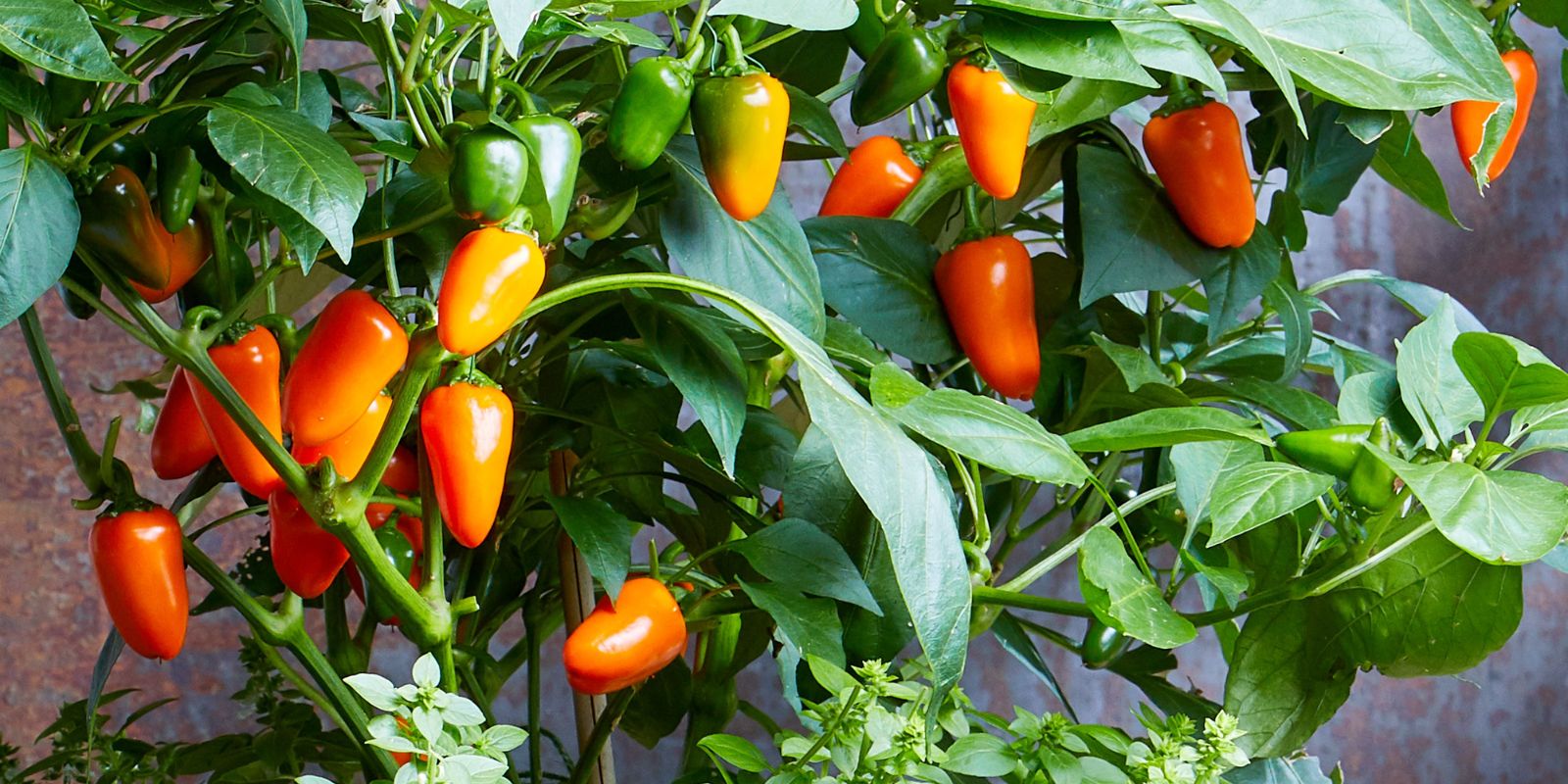Introduction
Chili peppers are an exciting and rewarding plant to grow at home. Whether you’re a fan of mild varieties or prefer the intense heat of spicier peppers, these versatile plants thrive both indoors and outdoors. Growing chili peppers not only brings heat to your kitchen but also color and vibrancy to your garden or balcony. With the right techniques, you’ll have a flourishing pepper plant that yields an abundance of spicy fruits!
Here’s a step-by-step guide to ensure your chili peppers thrive, even if you’re growing them in containers.
Step-by-Step Guide to Growing Chili Peppers at Home
1. Choosing the Right Chili Pepper Variety
Different varieties of chili peppers vary in size, heat level, and growth requirements. If you’re growing them in a small space or container, consider compact varieties like Jalapeños, Cayenne, or Serrano peppers.
Pro tip: Always check the plant label or seed packet to ensure the variety is suited to your growing conditions.
2. Selecting the Best Location
Chili peppers need full sun to thrive, which means they require at least 6-8 hours of direct sunlight per day. Whether you’re growing them in a garden bed or containers, ensure they are placed in a spot that receives ample sunlight. If growing indoors, a sunny windowsill or using grow lights can provide the necessary light for healthy development.
3. Preparing the Soil
Chili peppers prefer well-draining, nutrient-rich soil. Use a mix that includes organic compost to retain moisture but still allows excess water to drain easily. For container-grown peppers, using high-quality potting mix with added perlite or sand for drainage is ideal.
Soil pH: Chili peppers thrive in slightly acidic to neutral soil, with a pH range of 6.0-7.0. Testing your soil before planting can help ensure optimal growth.
4. Planting Seeds or Seedlings
- From seeds: Sow seeds indoors 6-8 weeks before the last expected frost. Plant seeds about 1/4 inch deep in seed trays or small pots. Keep them warm and moist until they germinate, usually within 1-2 weeks.
- Transplanting seedlings: If you’re starting from seedlings, wait until they have at least 2 sets of true leaves before transplanting them into larger containers or garden beds.
Tip: Space chili pepper plants about 18-24 inches apart in the garden to give them room to spread.
5. Watering Techniques
Chili peppers require consistent watering, but they don’t like soggy soil. Water the plants when the top 1-2 inches of soil feel dry. In hotter climates, you may need to water more frequently, especially if growing in containers. Always water at the base of the plant to prevent fungal diseases from forming on the leaves.
Avoid overwatering: While chili peppers need water to thrive, too much water can cause root rot and hinder growth. Maintain a balance by checking soil moisture regularly.
6. Fertilizing for Growth
Chili peppers are heavy feeders, especially when they start flowering and setting fruit. Use a balanced fertilizer (such as 10-10-10) or a fertilizer rich in potassium to encourage fruit development. Fertilize every 2-4 weeks for the best results.
If you prefer organic methods, compost tea or fish emulsion can provide the nutrients your chili peppers need. Always follow the recommended dosage to avoid over-fertilizing, which can lead to excessive foliage growth and fewer fruits.
7. Providing Support
As chili pepper plants grow taller and start to bear fruit, they can become top-heavy and may need support. Use stakes or small tomato cages to help support the plants, especially for varieties that produce large, heavy peppers.
8. Pruning and Pinching
Pruning your chili plants encourages better air circulation, reduces the risk of disease, and focuses the plant’s energy on producing fruit. Start by pinching off the top of the plant once it has about 4-6 sets of true leaves to encourage bushier growth. You can also prune lower branches or leaves that touch the soil to prevent fungal infections.
Tip: Regularly remove yellowing leaves or any branches that appear unhealthy to keep the plant focused on growing peppers.
9. Pollination
Chili peppers are self-pollinating, but you can help boost pollination by gently shaking the plants or brushing the flowers with a soft paintbrush. This method helps distribute the pollen and can increase your pepper yield.
10. Harvesting Chili Peppers
Chili peppers can be harvested at different stages, depending on your taste preference. Most varieties start off green and then ripen to red, yellow, or orange. Peppers harvested while green will have a milder flavor, whereas fully ripened peppers will be hotter and sweeter.
When to harvest: Peppers are typically ready for harvest about 70-90 days after planting. Use scissors or pruners to cut the peppers from the plant to avoid damaging the branches.
11. Protecting Against Pests and Diseases
Chili peppers are susceptible to pests like aphids, spider mites, and whiteflies. Inspect your plants regularly and treat infestations with insecticidal soap or neem oil. Fungal diseases, such as powdery mildew, can be prevented by maintaining good air circulation and keeping the foliage dry.
Tip: Mulching around the base of the plant can help retain moisture and reduce the spread of soil-borne diseases.
Caring for Your Chili Pepper Plant Year-Round
Chili peppers can thrive year-round in warmer climates or indoors. If you live in a cooler region, consider moving container plants indoors before the first frost to continue harvesting peppers throughout the colder months.
During the off-season, reduce watering and fertilizing to allow the plant to rest. With proper care, many chili pepper plants can live for several years and produce fruit annually.
Conclusion
Growing chili peppers at home is not only rewarding but also easy with the right care and techniques. Whether you’re looking to add heat to your meals or simply enjoy the beauty of these vibrant plants, following this guide will help you cultivate strong, productive pepper plants.
Don’t wait—start growing your own chili peppers today and enjoy a spicy harvest from the comfort of your home! 🌶️🌱
#ChiliPepperLove #HotPeppersAtHome #UrbanGardening #ContainerGardening #GrowYourOwnFood #SpicyHarvest #GardeningTips

